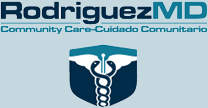Breast Cancer Awareness Month
October is National Breast Cancer Awareness Month. Most of us know someone who has been affected by the disease. Breast cancer is the second most common type of cancer in women. According to the Centers for Disease Control (CDC), approximately 237,000 women were diagnosed with breast cancer in 2014, the most recent year for which statistics are available. This disease strikes women in every racial and ethnic group, and even a small number of men. The risk increases with age, and 85% of women diagnosed with breast cancer have no family history.
 The most common symptom of breast cancer is a lump or mass in the breast tissue. Another telltale sign may be a change in the nipple or nipple discharge that is not breast milk. Other symptoms to be aware of include breast pain, thickening of an area of the breast, and changes in the skin of the breast including redness or dimpling. Unfortunately, many women will not exhibit any recognizable symptoms.
The most common symptom of breast cancer is a lump or mass in the breast tissue. Another telltale sign may be a change in the nipple or nipple discharge that is not breast milk. Other symptoms to be aware of include breast pain, thickening of an area of the breast, and changes in the skin of the breast including redness or dimpling. Unfortunately, many women will not exhibit any recognizable symptoms.
As with any cancer, early detection is critical. Women should examine their own breasts monthly. Any changes in the breasts or nipples should be reported to their doctor right away. A clinical breast exam is generally performed by a healthcare provider during most well-woman check-ups. It should be done every three to five years, depending on the woman’s age.
A mammogram is an x-ray examination of the breast. Many lumps that are too small to be detected in a self-exam or clinical breast exam can be seen with a mammogram. Any suspicious areas on the mammogram should be followed up with an ultrasound exam or a biopsy. The American Cancer Society currently recommends an annual screening mammogram starting at age 45 for women of average risk. After age 54, a woman who has not had any abnormal mammograms can continue to have a mammogram every other year through age 74. Women who have a higher risk of developing breast cancer, such as those with a close family history of the disease, should talk to their healthcare provider about beginning mammograms at an earlier age.




